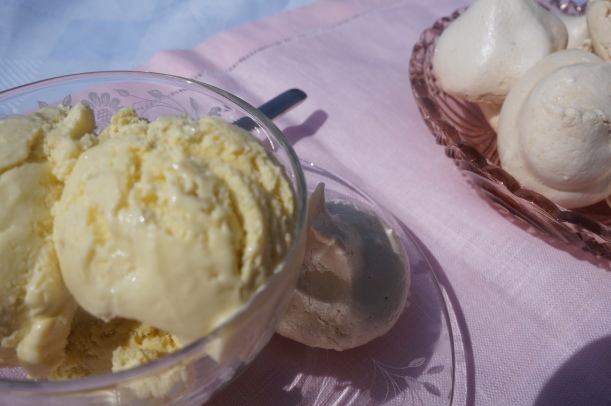
The best thing about foraging is that while all the gardeners are busy planting and fighting the weeds, we foragers are already enjoying some of the best harvest of the season. The dandelion greens are at their sweetest, roots easy to dig, nettles young and not too sting-y, edible flowers blooming and my lawn looks like a veritable smorgasbord. We don’t have to worry too much about what the weather does either – even after a blizzard this week, it only freshened up the wild edibles of the garden.
One of the spring treats I have been anticipating has just made its appearance. After learning about the edibility and nutritional value of Solomon seal shoots, I was eager to give them a try. Especially as I noticed last summer that my scattered patches of the plant have spread alarmingly, and really do need some control. Their arching branches and drooping white flowers in the early summer are beautiful, and among the most popular with the hummingbirds (who needs feeders!) which is why they grow near the house, so cutting some shoots had to be done carefully, just as a little spring tidying.
True Solomon seal or Polygantum biflorum can be a tricky plant to identify. The edible shoots have similar lookalikes, namely hosta and false solomon seal, both of which are also edible. The mature plant is not edible, except for the root which is used both as food and medicine but best left till autumn to harvest. It grows in shady, wooded areas, but unless you are sure of its identity, better to leave it alone.
If you plant it in your garden or somewhere you can track it, there is no problem recognizing it when it first appears in the spring, before any leaves form. I pick them when still tight spears up to about 3 inches in height, and remove the one brownish layer around the base of the spear. Most sites I read referred to boiling them in water for 10 minutes, so I stuck with that advice. The flavour and texture is very much like asparagus, and can be served as a substitute.
After harvesting the shoots, I cleaned them and dropped them in boiling water for the suggested 10 minutes. I then sauteed them lightly in a generous amount of butter mixed with ramps and mint. If you don’t have those greens, you can leave them out or substitute them with garlic or other herbs. To this mixture I added some cooked egg noodles. A little shaved parmesan can be added if you like, but for me the richness of the butter was adequate.
And that is one way you can enjoy a delectable spring green long before even the earliest asparagus is up.
Linked to: Fiesta Friday; Frugal Hausfrau; Unwed Housewife


 Ramps (aka wild garlic or leeks) season is here in Eastern Ontario, and the window for picking it is brief. To make things tougher for us ramps fans, care must be taken not to over harvest and deplete the crop for future years.
Ramps (aka wild garlic or leeks) season is here in Eastern Ontario, and the window for picking it is brief. To make things tougher for us ramps fans, care must be taken not to over harvest and deplete the crop for future years.






